
An Act to provide for the establishment of the Disaster Risk Management Division for the effective management of disaster through a comprehensive and integrated all-hazard approach and for matters connected therewith or incidental thereto.
The following is a list of all conten labeled as "Risk Identification & Assessment"

An Act to provide for the establishment of the Disaster Risk Management Division for the effective management of disaster through a comprehensive and integrated all-hazard approach and for matters connected therewith or incidental thereto.

The Twenty Third Annual Southern Africa Regional Climate Outlook Forum (SARCOF-23) was held in Luanda, Angola from 28 to 30 August 2019 to present a consensus outlook for the 2019/2020 rainfall season over the SADC region. Climate scientists from the SADC National Meteorological and/or Hydrological Services (NMHSs), the SADC Climate Services Centre (CSC) formulated this Outlook.
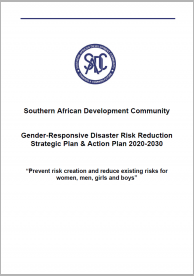
The SADC Gender Responsive Disaster Risk Reduction Strategy and Plan of Action: “Prevent Risk Creation and Reduce Existing Risks for Women, Men, Girls and Boys” 2020-2030 (GRDP) is designed to enhance regional capacities for gender-responsive disaster risk prevention, management and coordination in support of humanitarian assistance.
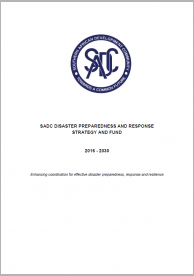
Enhancing coordination for effective disaster preparedness and response and resilience outlines the preparedness and response strategy and fund for the SADC region (hereinafter referred to as the Strategy and Fund) to facilitate a coordinated support for SADC Member States when they are overwhelmed by a disaster event. To this end the Strategy and Fund has three priorities:
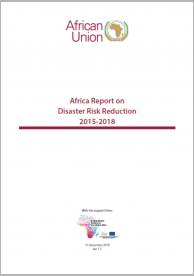
The aim of the Report is to comprehensively report on the implementation of the Programme of Action for the implementation of the Sendai Framework 2015-2030 and the Africa Strategy for Disaster Risk Reduction. This report focusses on all of the Member States of the Africa Union.
The objective is to use the outcome of the report to:
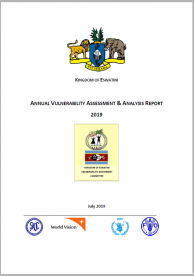
The 2019 Eswatini Vulnerability Assessment and Analysis was carried out between May and June 2019 with a view to provide information on the state of livelihoods and vulnerability with a particular emphasis on the rural areas of the country.
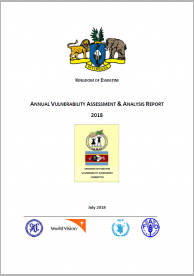
The Eswatini Vulnerability Assessment Committee (Eswatini VAC) conducted the annual assessment in an effort to understand the level of vulnerability at household level countrywide over the 2018/19 consumption period.
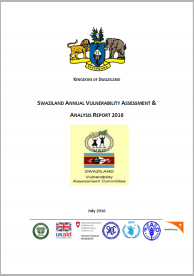
The Annual assessment’s objectives were to understand the status of livelihood sources in the rural and urban areas, thus to determine levels of food insecurity amongst populations, estimating vulnerable populations facing food insecurity and establish forms of coping mechanisms adopted during periods of food insecurity.

The purpose of the 2015 Annual Assessment was to assess the status of livelihoods and vulnerability in rural households and provide timely information for programming and decision-making.

The present Strategy establishes mechanisms to progressively but sustainably reduce the incidence (that is, the number of new infections) of HIV. The purpose of the Strategy is to identify the most critical interventions that can contribute to a significant reduction in the incidence of HIV in the country.